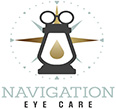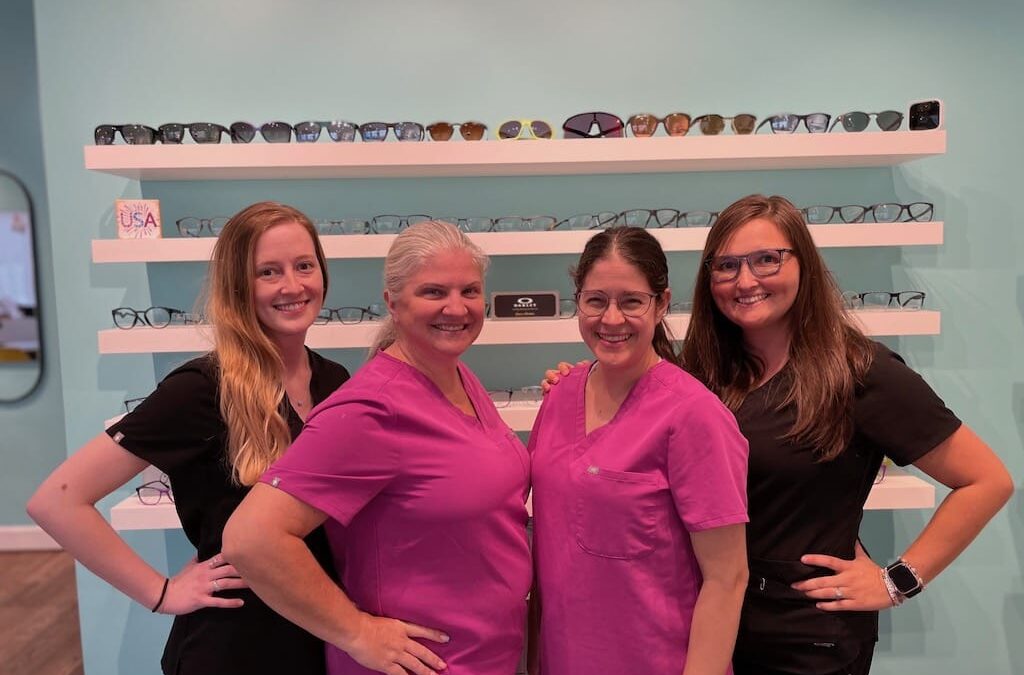Parent’s Guide to Strabismus and Amblyopia: Causes, Treatment, and Prevention
As parents, we strive to ensure our children’s well-being, and their eye health is no exception. Two common eye conditions that can affect children are strabismus and amblyopia. In this comprehensive guide, we will explore the causes, treatment options, and prevention strategies for these conditions, with insights from Optometrist Chesapeake VA at Navigation Eye Care.
Understanding Strabismus and Amblyopia
- Strabismus (Crossed Eyes)
Strabismus is a condition in which a child’s eyes do not align properly. As a result, one eye may turn inward, outward, upward, or downward while the other eye focuses correctly. This misalignment can be constant or intermittent.
Key Points:
-
- Strabismus can be present at birth or develop during early childhood.
- It may be due to muscle imbalances or neurological issues.
- If left untreated, strabismus can lead to amblyopia.
- Amblyopia (Lazy Eye)
Amblyopia is a condition in which one eye has weaker vision than the other. It typically occurs when one eye sends stronger visual signals to the brain, causing the brain to rely more on that eye and neglect the weaker one.
Key Points:
-
- Amblyopia often develops in childhood, especially if strabismus is present.
- Early diagnosis and intervention are crucial to prevent long-term vision impairment.
- Treatment aims to strengthen the weaker eye and encourage proper visual development.
Causes of Strabismus and Amblyopia
- Genetics: Family history can play a role in the development of these conditions.
- Refractive Errors: Nearsightedness, farsightedness, or astigmatism in one eye can lead to amblyopia.
- Premature Birth: Premature infants are at a higher risk for both strabismus and amblyopia.
- Eye Muscle Imbalances: Problems with the eye muscles that control eye movement can lead to strabismus.
Treatment Options
1. Vision Therapy: Vision therapy is often recommended by Optometrist Chesapeake VA at Navigation Eye Care. It involves a series of exercises and activities designed to improve eye coordination and focusing abilities. This can be especially effective for treating amblyopia.
2. Eyeglasses or Contact Lenses: Corrective lenses may be prescribed to address refractive errors that contribute to amblyopia.
3. Surgery: In cases of severe strabismus, surgical intervention may be necessary to align the eyes properly.
Prevention Strategies
- Regular Eye Exams: Schedule routine eye exams for your child, starting at a young age. Early detection and intervention can prevent or mitigate these conditions.
- Vision Screening: Many schools offer vision screenings, but these are not a substitute for comprehensive eye exams by Optometrist Chesapeake VA. Ensure your child receives regular eye check-ups.
- Create a Vision-Friendly Environment: Ensure proper lighting for reading and studying. Limit screen time and encourage outdoor activities to reduce the risk of developing myopia (nearsightedness).
- Family History: If there is a family history of strabismus or amblyopia, inform your child’s eye care provider.
Conclusion: Nurturing Healthy Vision
As parents, our role in nurturing our children’s healthy vision is crucial. By understanding the causes, treatment options, and prevention strategies for strabismus and amblyopia, we can empower ourselves to take proactive steps to protect our children’s eye health. Regular eye exams and early intervention, as provided by Optometrist Chesapeake VA and her team of professionals at Navigation Eye Care, are key to ensuring that our children’s vision remains bright and unimpeded as they grow.
Children’s Eye Safety: Preventing Common Injuries at Home and Play
As parents, we go to great lengths to protect our children from harm, but sometimes, we may not be aware of the potential risks that exist in everyday activities. When it comes to our children’s eye safety, being proactive is crucial. In this comprehensive guide, we will explore the common eye injuries that children may face at home and during play, along with expert advice from Optometrist Chesapeake VA from Navigation Eye Care on how to prevent them.
The Importance of Children’s Eye Safety
- Eye Injuries Are Common
Eye injuries among children are more common than you might think. These injuries can range from minor scratches to more severe trauma that can result in long-term vision problems.
- Prevention Is Key
The good news is that many eye injuries are preventable with some awareness and precautions. Parents and caregivers can take steps to minimize risks and protect their children’s precious eyesight.
Common Eye Injuries in Children
- Foreign Objects in the Eye
Kids are curious, and they often explore their surroundings by touching objects. This can lead to foreign bodies like dust, dirt, or small toys getting lodged in their eyes.
- Chemical Burns
Household chemicals, cleaning agents, and even certain arts and crafts supplies can cause chemical burns if they come into contact with a child’s eyes.
- Sports-Related Injuries
Participation in sports and recreational activities can sometimes result in eye injuries due to flying objects, collisions, or falls.
- Sunlight Exposure
Prolonged exposure to the sun without proper eye protection can lead to sunburned eyes, known as photokeratitis, which can be painful.
Preventing Children’s Eye Injuries
- Supervision Is Key
Always supervise young children during play and ensure they are not engaging in activities that could lead to eye injuries.
- Safety Gear
When participating in sports or recreational activities, ensure your child wears appropriate safety gear, including helmets and protective eyewear if necessary.
- Safety Measures at Home
Keep hazardous chemicals and small objects out of reach of children. Install safety locks on cabinets to prevent accidental access.
- Sun Protection
Encourage your child to wear sunglasses that block 100% of UV rays when spending time outdoors. This can prevent sunburned eyes and reduce the risk of long-term UV-related damage.
When to Seek Professional Help
If your child experiences an eye injury, it’s crucial to seek immediate medical attention. Do not rub or touch the injured eye, as this can exacerbate the damage. Instead, cover the eye gently with a clean cloth and visit Navigation Eye Care as soon as possible.
Regular Eye Exams for Preventive Care
In addition to preventing injuries, regular eye exams are essential for monitoring your child’s eye health. Optometrist Chesapeake VA at Navigation Eye Care recommends scheduling comprehensive eye exams for your child to detect and address any vision issues early.-
Safeguarding Your Child’s Vision
Protecting your child’s eyesight is a top priority. By understanding common eye injury risks and taking preventive measures, you can create a safe environment for your child at home and during play. Remember that early detection and professional care are crucial, so don’t hesitate to consult Navigation Eye Care, home of Optometrist Chesapeake VA, for all your child’s eye health needs. With the right precautions and proactive care, you can help ensure that your child enjoys a lifetime of healthy vision

